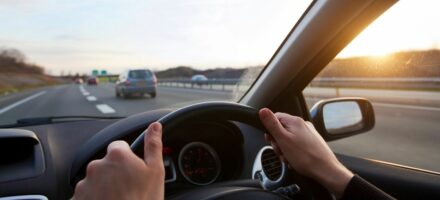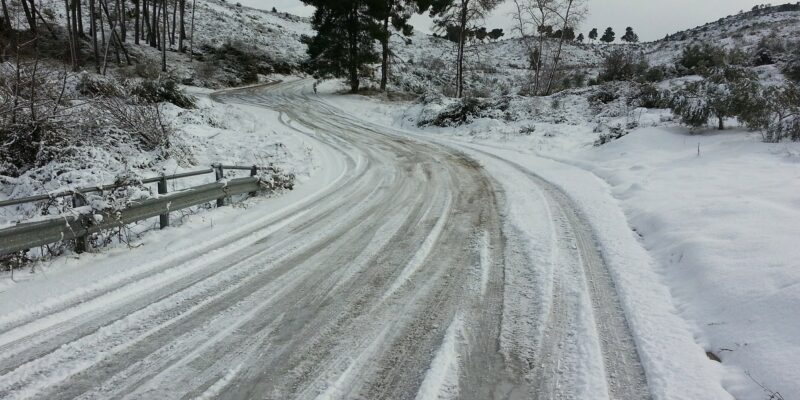

With spring/summer feeling a lifetime away right now - and the wintery weather conditions sticking around for longer than hoped - your safety whilst driving is key. In these conditions we must change our approach to driving in terms of how we prepare our cars, plan our journeys and more importantly, the way we drive.
Here’s our essential tips for you to stay safe on the roads:
1. PREPARE YOUR CAR
Even the most minor faults can cause major safety issues during winter condtition. Putting your car through a service will ensure any issues are identified and fixed. Our knowledgeable team can tell you more about our flexible service plans.
Alternatively, you should at least make sure your lights, brakes, tyres, windscreen wipers and car battery are all in tip-top condition ahead of any change in weather.
Also check and top-up all your car fluids. A 50-50 mix of water and anti-freeze provides the best protection from severe engine damage caused by a frozen or cracked engine block. This will cost significantly more to repair than a bottle of antifreeze.
2. FIND THE RIGHT TYRES
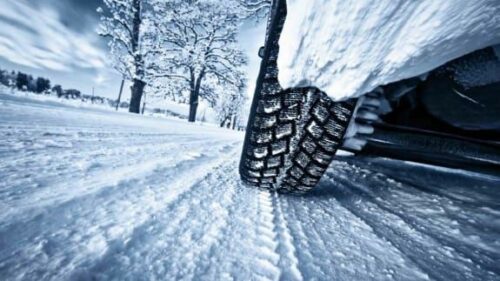
The legal minimum tyre thread during winter months is 3mm – which is almost twice the 1.6mm minimum tyre thread requirement during any other season. So at the very least, make sure your tyres are legal for winter driving, but also consider investing in some winter or all-season tyres. These retain their softness at lower temperatures and therefore provide a stronger grip on slippery surfaces.
We’re happy to suggest and fit the right tyres for your vehicle in winter.
3. PACK THE ESSENTIALS
However long the journey, don’t just rely on your car’s heating to warm you up. Wear sufficiently warm clothing and take a hot flask out with as well as a snack. You’ll surely be glad of it if you break down or hit heavy traffic. A fully charged phone also comes in handy in the event of a breakdown.
Here’s a list of other essentials that can be left in your car throughout the winter:
- A warm blanket
- Torch
- Wellies
- De-icer
- Ice-scraper
- Spade
- Emergency warning triangle
4. ALLOW MORE TIME BEFORE ANY JOURNEY
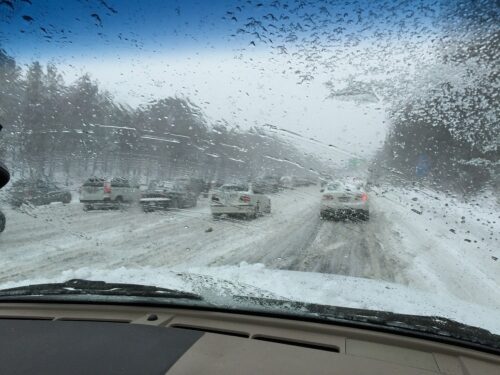
The Highway Code dictates that you must be able to see clearly out of all windows before setting off on your journey. A lot of people don’t think to set time aside each morning to properly de-ice and de-mist their car windows. This can lead to people driving with incredibly limited vision of what’s ahead and around them, which can easily lead to an accident.
Use lukewarm water (never hot or boiling), a good ice-scraper and de-icer whilst running the engine to quicken the process. Just make sure that all windows are clear of ice, snow and mist before you leave.
5. ENSURE YOU ADAPT FOR ICE AND SNOW
Arguably the biggest challenge of winter driving is dealing with icy roads and snow. Always reduce your speed and keep a large gap between you and the car in front to prepare for increased stopping distances.
Avoid sharp braking and steering at all times, especially around bends. Instead, go into a lower gear earlier on and allow your speed to smoothly reduce before gently hitting the brake to avoid skidding. If you do find yourself skidding, don’t panic. Gently steer into the skid to straighten up and regain control.
6. KEEP YOUR CAR WELL VENTILATED
Condensation in cars is a more regular occurrence in freezing conditions as there is a greater difference in temperature and moisture levels inside and outside of the car. This can build up during a journey which can be dangerous if visibility decreases. Fully turned up heaters can also lead to drowsiness – increasing the need for fresh air.
Avoid using air recirculation settings during winter as this closes off the vents that allow outside air into the car. Opening the windows slightly will also help create more of a balance.
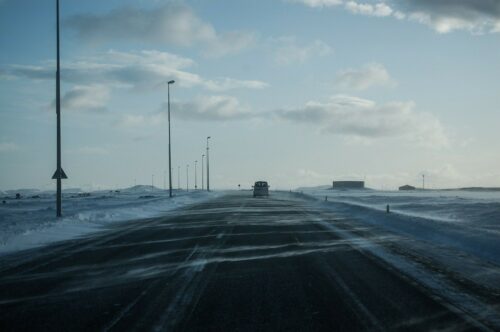
7. KNOW HOW YOUR ABS WORKS
Most modern cars feature anti-lock braking systems (ABS) but it should not be overly relied on, especially in dangerous conditions. ABS uses sensors to prevent wheels from locking during heavy braking in order to prevent skidding. This allows the driver to maintain steering control while braking, but ultimately ABS works less efficiently on slippery surfaces.
Therefore, while it’s an incredibly useful safety device, it’s no substitute for cautious driving.
8. KNOW WHEN TO USE YOUR FOG LIGHTS
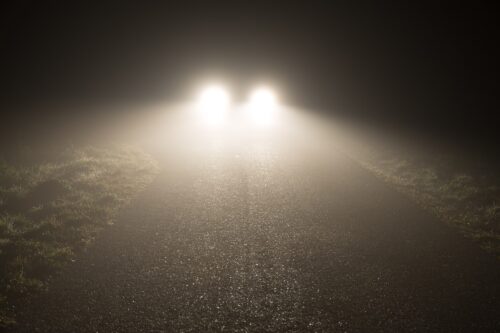
Colder and wetter conditions lead to fog and ultimately impaired vision when driving. Driving through fog calls for a much more cautious approach although, according to the Highway Code, you must not use your fog lights unless visibility is seriously impaired.
Turn them off when visibility improves or else they may dazzle other drivers and overpower your brake lights.
9. PREPARE FOR LESS LIGHT
Less sunlight means that roads will be busy often in complete darkness or during sunrise and sunset. The result is plenty of glare from low sunlight and headlights, so ensure your windscreen is clean inside and out to reduce the dazzling effects.
Think about replacing old windscreen wipers with new ones to avoid smearing – particularly when incoming light is amplified by rain or snow.
10. KNOW HOW TO TACKLE FLOODED ROADS
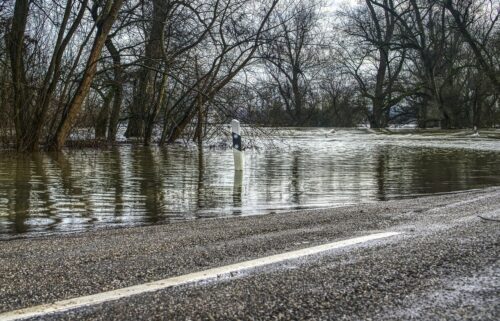
In Britain we’re used to regular rainfall all year round, but we tend to receive substantially more during the winter months. Avoid driving in the event of severe floods. Otherwise check weather reports and if there’s a chance of flooding, plan your route accordingly and stick to main roads.
If you do encounter a flooded road and you are unsure of how deep the water goes, turn back and find an alternative route. If you’re certain the water is shallow enough to drive through, drive slowly in first gear to avoid stalling, as attempting to restart the engine while stranded in water can cause large repair bills.
Stick to the middle of the road where it is at its most shallow and always press your brakes when you reach the other side to dry them off.



